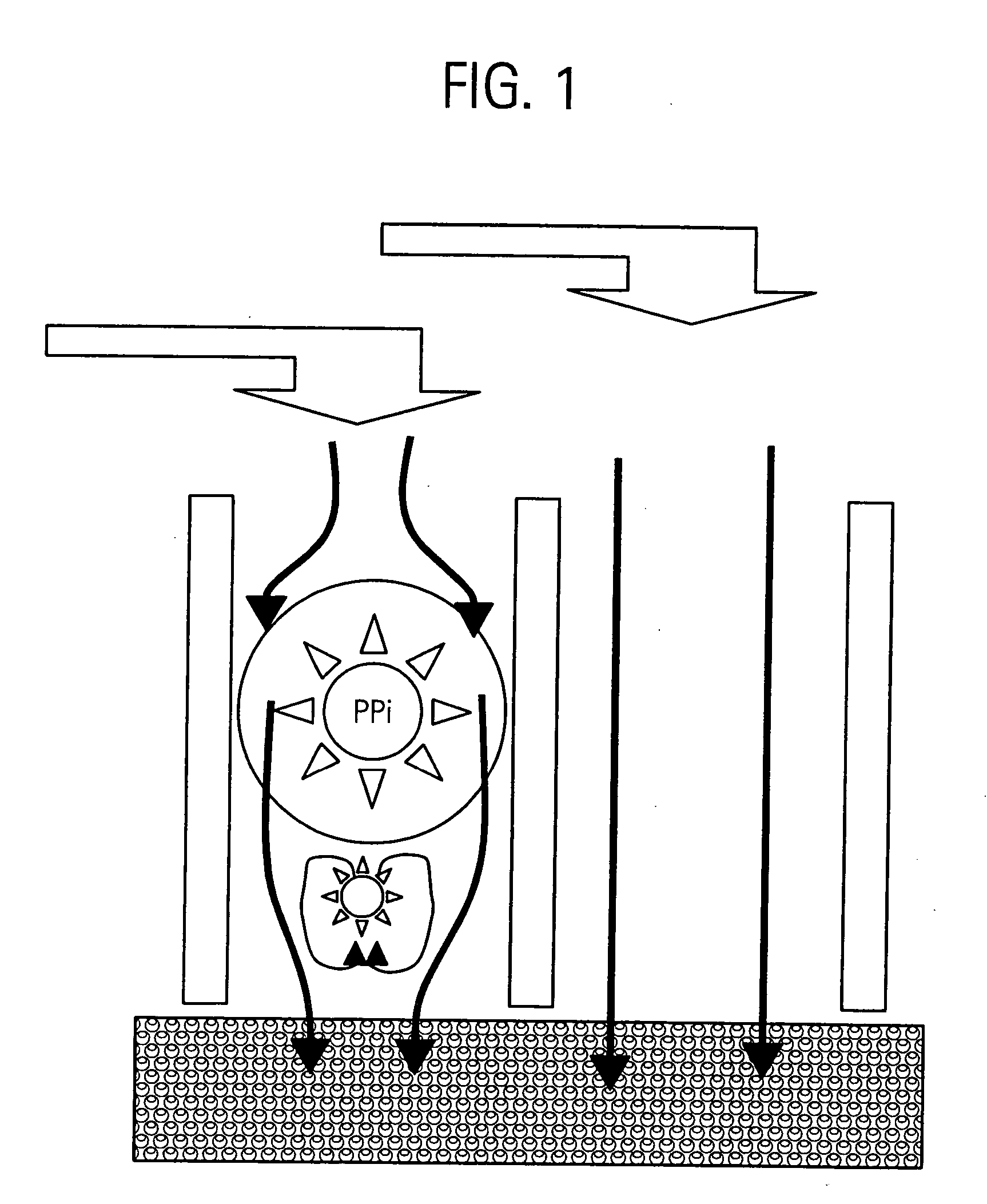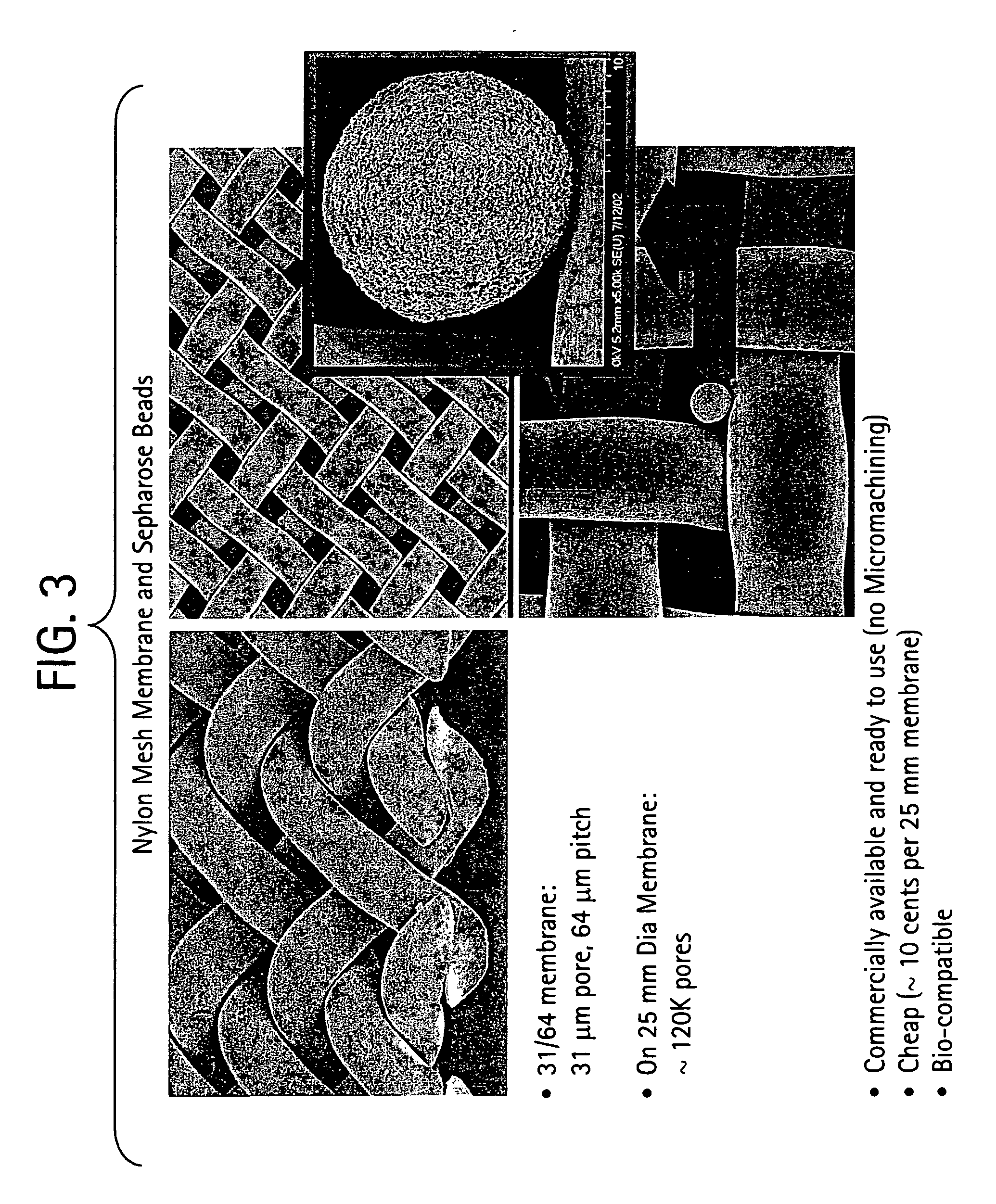Method for isolation of independent, parallel chemical micro-reactions using a porous filter
a technology of porous filter and chemical micro-reaction, which is applied in the field of method for isolation of independent, parallel chemical micro-reaction using a porous filter, can solve the problems of limiting unique reactants and products to a single, affecting the stability of the reaction, and affecting the reaction efficiency of the reaction, so as to achieve the effect of preventing evaporation
- Summary
- Abstract
- Description
- Claims
- Application Information
AI Technical Summary
Benefits of technology
Problems solved by technology
Method used
Image
Examples
example 1
Sequencing UATF9 DNA Template On Convective Rig
Preparing the Beads
[0124] Streptavidin-sepharose beads were size-selected by filtering to obtain diameter between 30-36 μm. The primers and target DNA included: MMP7A sequencing primer (5′-ccatctgttc cctccctgtc-3′; SEQ ID NO:6); target DNA, termed UATF9 (3′-ATGCCGCAAA AACGCAAAAC GCAAACGCAA CGCATACCTC TCCGCGTAGG CGCTCGTTGG TCCAGCAGAG GCGGCCGCCC TTGCGCGAGC AGAATGGCGG TAGGGGGTCT AGCTGCGTCT CGTCCGGGG-5′; SEQ ID NO:7); biotinylated primer and PCR reverse primer, termed Bio-Heg-MMP1B (5′-5Bio / / iSp18 / / iSp18 / / iSp18 / cca tct gtt gcg tgc gtg ct-3′; SEQ ID NO:8); and PCR forward primer, termed MMP1A (5′-cgtttcccct gtgtgccttg-3′; SEQ ID NO:9). For the PCR reverse primer, “5Bio” indicates biotin and “iSp18” indicates Spacer 18.
[0125] The biotinylated PCR products were immobilized onto Streptavidin-Sepharose beads. Immobilized PCR product was incubated in 0.10 M NaOH for 10 min, and the supernatant was removed to obtain single-stranded DNA. The be...
example 2
PCR on Nylon Membrane Containing Beads and Sequencing Using a Pyrosequencer: The Sequencing Step was to Confirm the Fidelity of the Amplified Template
[0130] The primers and probe included:
NameSequenceSEQ ID NO:Adeno P1 forward5′ caa tta acc ctc act aaa gg 3′1Adeno P2 reverse5′ gta ata cga ctc act ata ggg 3′2tf23′cgatcaagcgtacgcacgtggttgttaaagcttttttgaaagttaatc3tcctggttcaccgtctgctcgtatgcggttaccaggtcggcggccgccacgtgtgcgcgcgcgggactaatcccggttcgcgcgtcgg 5′Biotinylated probe Adeno P15′ / Bio / / iSp18 / / iSp18 / iSp18 / caa tta acc ctc act aaa4gg 3′
[0131] The sepharose beads were treated as in Example 1, with a concentration of 3,500 beads per microliter. Next, 90 μl of sepharose beads were washed by resuspension in 200 μl of 1× PCR buffer and this was followed by centrifugation for a total of three washes. After the final wash, 200 μl of 1× PCR buffer was placed on top of the beads pelleted by centrifugation. Then, 6 μl of 100 pmol / μl biotinylated P1 probe was added to the top of the beads / PCR bu...
example 3
Methods for Pyrosequencing
[0137] Any DNA may be sequenced using the procedure described herein. Briefly, beads are filtered to obtain a diameter of 25-30 μm and resuspended at a concentration of 3,500 beads / μl, as described above. Next, 14 μl of the bead solution is placed into a tube for each sample to be sequenced. The beads are pelleted at 13,000 rpm. The supernatant is replaced with 500 μl of a mixture of the three enzymes (6 μl of sulfurylase at 1 mg / ml, 6 μl of luciferase at 3 mg / ml, and 60 μl of Bst polymerase at 50 U / μl) and 428 μl of 1× Assay Buffer containing 1 mg / ml BSA. The tube is placed in a rotator for 1 hr at room temperature, at about one turn every 2 sec. Then, the beads are pelleted by centrifugation at 2,000 rpm for 2.5 min. The beads are washed once with 200 μl of 1× Assay Buffer without BSA. Then the beads are loaded onto a membrane with 30 μm pore for pyrophosphate sequencing.
PUM
| Property | Measurement | Unit |
|---|---|---|
| diameter | aaaaa | aaaaa |
| diameter | aaaaa | aaaaa |
| size | aaaaa | aaaaa |
Abstract
Description
Claims
Application Information
 Login to View More
Login to View More - R&D
- Intellectual Property
- Life Sciences
- Materials
- Tech Scout
- Unparalleled Data Quality
- Higher Quality Content
- 60% Fewer Hallucinations
Browse by: Latest US Patents, China's latest patents, Technical Efficacy Thesaurus, Application Domain, Technology Topic, Popular Technical Reports.
© 2025 PatSnap. All rights reserved.Legal|Privacy policy|Modern Slavery Act Transparency Statement|Sitemap|About US| Contact US: help@patsnap.com



